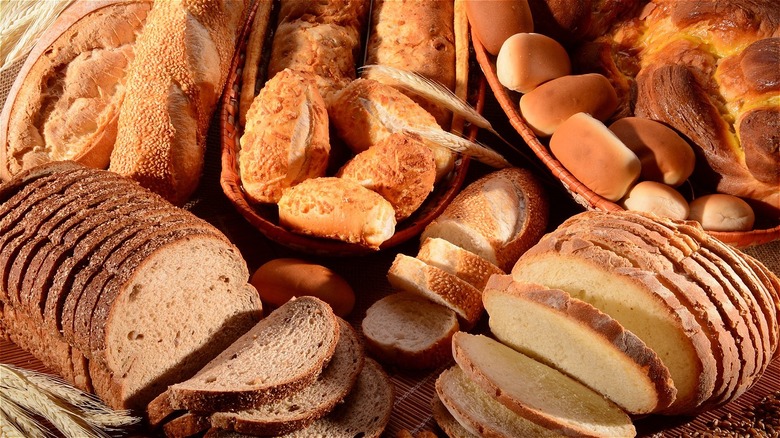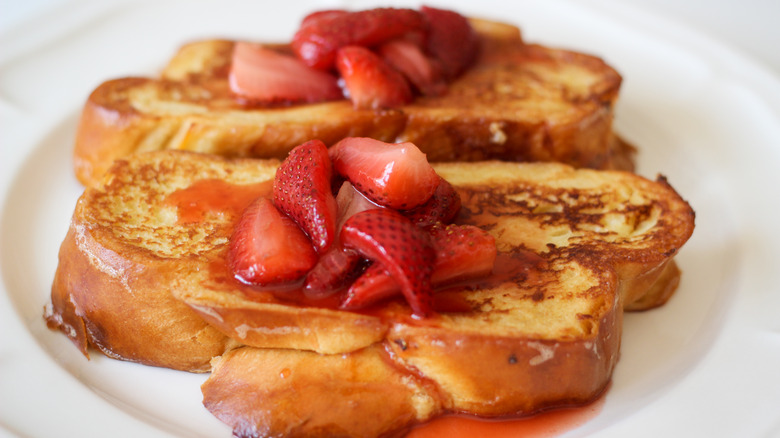The Best Bread For French Toast
For centuries cooks have frugally and brilliantly created recipes to limit waste in the kitchen, an environmentally responsible act we should be doing more of today. Referred to as "cucina povera" or "poor cooking," the act of zero-waste was born out of necessity in rural Italy. The tradition of using up every ingredient and stretching your dollar further gave birth to some of the most delicious regional recipes we still enjoy today. According to Eataly, the familiar Italian dishes bruschetta, ribolitta, and panzanella were invented by peasants to avoid throwing away stale bread hundreds of years ago. Despite the misleading name, the delicious breakfast dish, French toast, is one such recipe created not by the French but by the Romans in the 5th century (via The Breakfast Shoppe).
Known in different cultures as "eggy bread, French-fried bread, gypsy toast, Poor Knights of Windsor, Spanish toast, nun's toast," or in France as pain perdu, there are endless variations of pancake's bougie cousin. Soaked in an egg custard and fried, French toast is a quick dish that should be tender inside and crispy on the edges, whether it's stuffed, coated, or traditionally prepared.
With just a handful of humble ingredients, it's not necessary to follow a recipe to whip up this brunch superstar; however, like any dish, there are common French toast mistakes to avoid. While you can vary how French toast is sweetened and flavored, each version succeeds and fails with your bread choice. Here's how to make it right.
Thick French toast
Whether it's scented with orange zest or flavored with cinnamon and vanilla extract, French toast can be customized to suit any palate. Dusted with confectioner's sugar and drizzled with maple syrup, the sweet dish teeters on dessert, which is why it's a popular brunch option.
To withstand the 10-20 second soak in custard, it's essential to use the correct type of bread that won't fall apart when saturated. Food Network suggests using egg-based bread like brioche, challah, or Pullman loaf that are hearty enough to maintain their shape when soaked. The sweet, butter-enriched bread will create a rich, decadent French toast without distracting from the flavors in the custard—French bread and, although tangy, sourdough are also good options. To control the thickness of each slice, avoid purchasing presliced bread. If the bread is too thick, it won't thoroughly absorb the custard, remaining dry inside. If the slice is too thin, it will fall apart during cooking. Ideally, each French toast slice should be cut 3/4" to 1" thick according to Bon Appetit.
French toast is best made with stale bread, which acts like a sponge, soaking up the custard. However, we recognize sometimes cravings hit, not leaving you 24 hours to wait. In emergencies, lightly toast the bread to dry it out before soaking it in the custard. Then, follow your favorite brioche French toast recipe, or cinnamon French toast bites, or plan ahead with an overnight French toast casserole.

